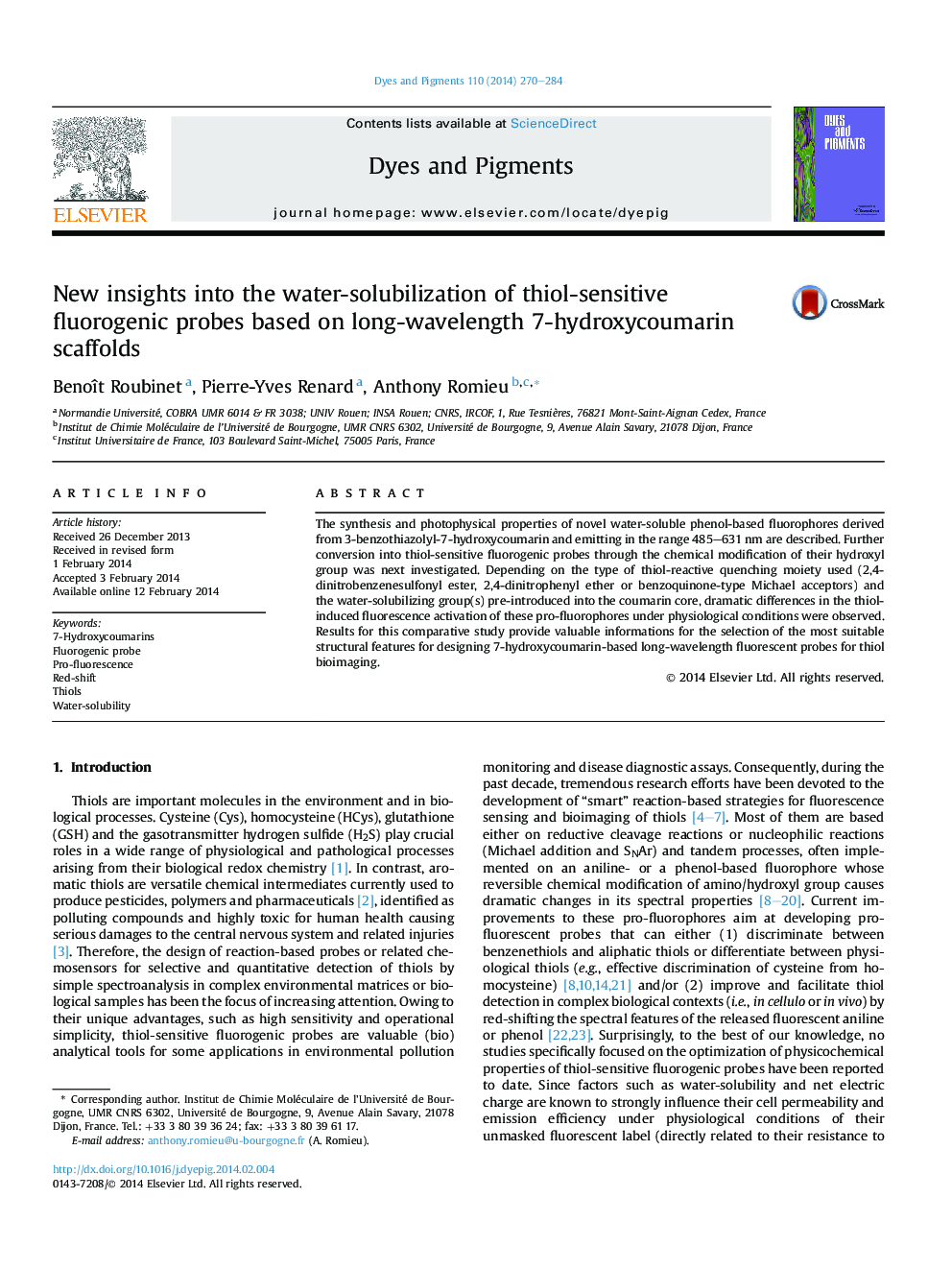| Article ID | Journal | Published Year | Pages | File Type |
|---|---|---|---|---|
| 176037 | Dyes and Pigments | 2014 | 15 Pages |
•Synthesis of novel water-soluble 3-benzothiazolyl-7-hydroxycoumarins.•Unprecedented high quantum yields in simulated physiological conditions (pH 7.5).•Assessment of four different thiol-responsive trigger groups for fluorogenic probes.•Sulfonate substituent influences both stability and thiol-reactivity of fluorogenic probes.
The synthesis and photophysical properties of novel water-soluble phenol-based fluorophores derived from 3-benzothiazolyl-7-hydroxycoumarin and emitting in the range 485–631 nm are described. Further conversion into thiol-sensitive fluorogenic probes through the chemical modification of their hydroxyl group was next investigated. Depending on the type of thiol-reactive quenching moiety used (2,4-dinitrobenzenesulfonyl ester, 2,4-dinitrophenyl ether or benzoquinone-type Michael acceptors) and the water-solubilizing group(s) pre-introduced into the coumarin core, dramatic differences in the thiol-induced fluorescence activation of these pro-fluorophores under physiological conditions were observed. Results for this comparative study provide valuable informations for the selection of the most suitable structural features for designing 7-hydroxycoumarin-based long-wavelength fluorescent probes for thiol bioimaging.
Graphical abstractFigure optionsDownload full-size imageDownload as PowerPoint slide
